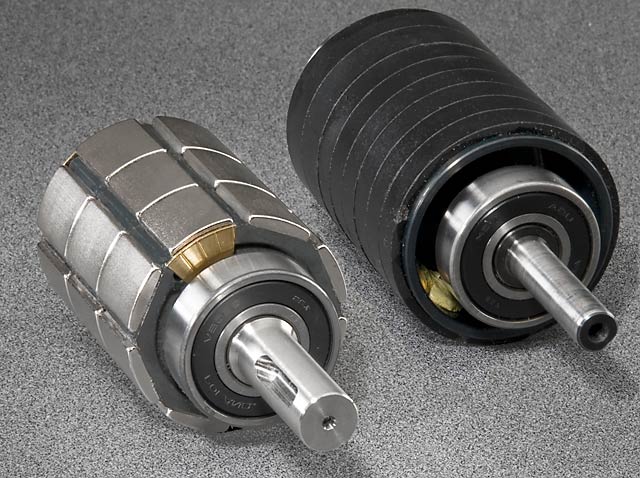- Ac Motor Winding Software Free
- Ac Motor Winding Software Downloads
- Ac Motor Winding Data Software
- Ac Motor Winding Software Download
The winding calculator allows you to find the optimum winding layout for your electric motor in a fast and convenient way. You can investigate three-phase integer-slot, fractional-slot and concentrated windings, both with single and double winding layers where appropriate. You can compare the maximum fundamental winding factor for different combinations of number of poles and number of slots, display the winding layout for different coil spans, or evaluate the harmonic spectrum of the winding factor.
Emetor specifically disclaims any warranties, including, but not limited to, the implied warranties of merchantability, accuracy, or fitness for any particular purpose. In no event shall Emetor be liable to any party for any damages arising out of the use of information from this winding calculator.
Thermal protectors can also be built into the windings, see the illustration below. They operate as a sensitive power cut-out for both single and three-phase motors. In single-phase motors, up to a given motor size around 1.1 kW it can be mounted directly in the main circuit to serve as an on-winding protector. Download Open Motor Simulation for free. A model for GNU Octave that simulates a generic direct current electrical motor. It can simulate Brushelss DC Motors (BLDC), Switched Reluctance Motors (SRM) as well as any combination of these two.
Determine number of slots and number of poles
To get started, choose the approximate range of number of poles and number of slots that you are interested in. After updating the table, the drop-down list below lets you select whether to display the number of slots per pole per phase, the maximum possible fundamental winding factor, the number of winding symmetries, or the least common multiple between the number of poles and the number of slots in the table.
Ac Motor Winding Software Free
Investigate and edit specific winding layouts

Ac Motor Winding Software Downloads

Ac Motor Winding Data Software
Click on a cell in the above table in order to investigate which winding layouts are possible for that specific number of poles and number of slots.
Ac Motor Winding Software Download
Use it to design the electromechanical device schematics and electronic circuit diagrams.
'A transformer is an electrical device that transfers energy between two circuits through electromagnetic induction. Transformers may be used in step-up or step-down voltage conversion, which 'transforms' an AC voltage from one voltage level on the input of the device to another level at the output terminals. This special function of transformers can provide control of specified requirements of current level as an alternating current source, or it may be used for impedance matching between mismatched electrical circuits to effect maximum power transfer between the circuits.
A transformer most commonly consists of two windings of wire that are wound around a common core to induce tight electromagnetic coupling between the windings. The core material is often a laminated iron core. The coil that receives the electrical input energy is referred to as the primary winding, while the output coil is called the secondary winding.
An alternating electric current flowing through the primary winding (coil) of a transformer generates an electromagnetic field in its surroundings and a varying magnetic flux in the core of the transformer. By electromagnetic induction this magnetic flux generates a varying electromotive force in the secondary winding, resulting in a voltage across the output terminals. If a load impedance is connected across the secondary winding, a current flows through the secondary winding drawing power from the primary winding and its power source.' [Transformer. Wikipedia]
'An electromagnetic coil (or simply a 'coil') is formed when a conductor is wound around a core or form to create an inductor or electromagnet. When electricity is passed through a coil, it generates a magnetic field. One loop of wire is usually referred to as a turn or a winding, and a coil consists of one or more turns. For use in an electronic circuit, electrical connection terminals called taps are often connected to a coil. Coils are often coated with varnish or wrapped with insulating tape to provide additional insulation and secure them in place. A completed coil assembly with one or more set of coils and taps is often called the windings.
Windings are used in transformers, electric motors, inductors, solenoids, loudspeakers, and many other applications.' [Electromagnetic coil. Wikipedia]
The shapes example 'Design elements - Transformers and windings' was drawn using the ConceptDraw PRO diagramming and vector drawing software extended with the Electrical Engineering solution from the Engineering area of ConceptDraw Solution Park.